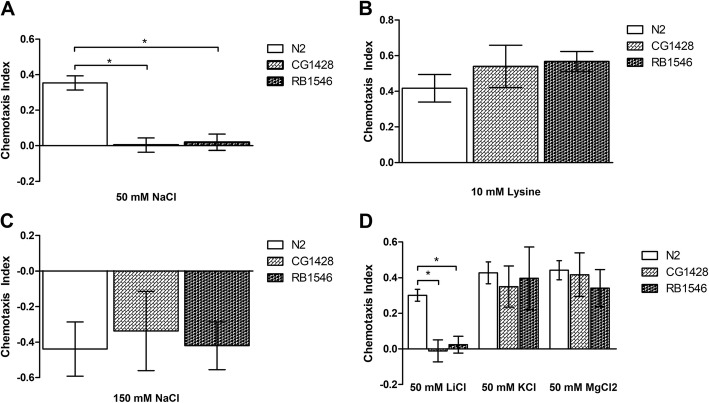Fig. 1.
TMC-1 contributes to C. elegans’ salty taste pathway. Each individual chemotaxis assay contained at least 100 nematodes, data reported here as average of independent assays (n). Each data point represents a minimum of three assays. Chemotaxis index (CI) has a range of − 1 to 1, where positives values indicate attraction to tastant, negative values indicate aversion, and values close to 0 indicate no preference. Error bars represent SEM. Asterisks identify significant strain effects as indicated by planned LSD tests following one-way ANOVA (p < 0.05). (a). TMC-1 is required for sodium induced attraction behaviors. Tmc-1 mutants CG1428 and RB1546 behaved significantly different from wild-type N2 toward 50 mM NaCl (n: N2 = 6, CG = 5, RB = 4). (b). Mutation of tmc-1 does not disrupt the lysine taste pathway (n: N2 = 5, CG = 5, RB = 4). Tmc-1 mutants exhibited no statistically significant difference from wild-type in their attraction to 10 mM lysine. (c). TMC-1 is not required for sodium-induced avoidance behaviors. (n: N2 = 4, CG = 4, RB = 5) (d). TMC-1 contributes to non-sodium salt induced attraction behaviors. Mutation of tmc-1 disrupts the nematodes’ attraction to 50 mM LiCl (n: N2 = 4, CG = 4, RB = 4), however there was no statistically significant difference in the nematodes’ behavior toward 50 mM KCl (n: N2 = 7, CG = 10, RB = 7) or 50 mM MgCl2 (n: N2 = 8, CG = 3, RB = 5)

